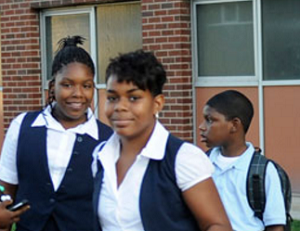Every American family chooses where their child will attend school, whether they know it or not. Some, however, have more choice than others. Affluent families can choose to move to a neighborhood tied to a good school or pay private school tuition. But less affluent families’ choices are too often limited to the schools in the high-poverty neighborhoods where they can afford to live.
 School choice policies aim to break the link between where children live and where they go to school. They seek to interrupt the cycle of poverty by providing low-income children with access to high-quality educational options that will boost their chances of long-term success. Choice programs come in several flavors, including charter schools, which are publicly funded but independently operated; private school vouchers, which cover all or part of private school tuition; and open enrollment plans (sometimes called public school vouchers) that allow parents to send their child to any public school in the district. When done right, school choice programs can be powerful tools in the fight against poverty.
School choice policies aim to break the link between where children live and where they go to school. They seek to interrupt the cycle of poverty by providing low-income children with access to high-quality educational options that will boost their chances of long-term success. Choice programs come in several flavors, including charter schools, which are publicly funded but independently operated; private school vouchers, which cover all or part of private school tuition; and open enrollment plans (sometimes called public school vouchers) that allow parents to send their child to any public school in the district. When done right, school choice programs can be powerful tools in the fight against poverty.
Evidence indicates that school choice programs can improve the educational and life outcomes of low-income students, but not all programs are equally effective. Charter schools such as KIPP and the Harlem Children’s Zone Promise Academy have large positive effects on the academic achievement of their (mostly disadvantaged) students. At the same time, charters vary widely in their effectiveness and thus include many low-performing schools among their ranks.
Private school vouchers have a generally positive track record in their impacts on test scores, and evidence suggests that they can increase the educational attainment of low-income minority students. Yet, a recent study of the first two years of Louisiana’s private school voucher program documented large negative impacts on test scores. The precise reason for this negative impact is unclear, but it suggests that careful attention to policy design is critical.
Even in a time of great political polarization, at least some school choice policies have the potential to foster bipartisan collaboration. House Republicans’ recent antipoverty blueprint describes school choice as an “increasingly important lifeline for children trapped in failing schools,” citing private school choice programs in Florida and Washington, DC, as examples. The politics on the Democratic side are complicated by the party’s relationship with teachers’ unions, but many Democrats have also embraced some forms of school choice as part of reform efforts aimed at reducing educational inequality. President Barack Obama and former education secretary Arne Duncan are both supporters of charter schools, and even progressive stalwart Senator Elizabeth Warren proposed a system of public school vouchers in a 2004 book.
School choice policy, like most education policy, is largely made at the state and local levels. But the federal government could allow states to enact funding systems where federal, state, and local dollars follow students to the public schools of their choice. This type of market-based system would appeal to free-market Republicans while taking a page right out of Senator Warren’s book.
– Matthew Chingos
This first appeared on Urban Wire, the blog of the Urban Institute. It is part of a series in which Urban Institute scholars will offer evidence-based ideas for reducing poverty and increasing opportunity.


